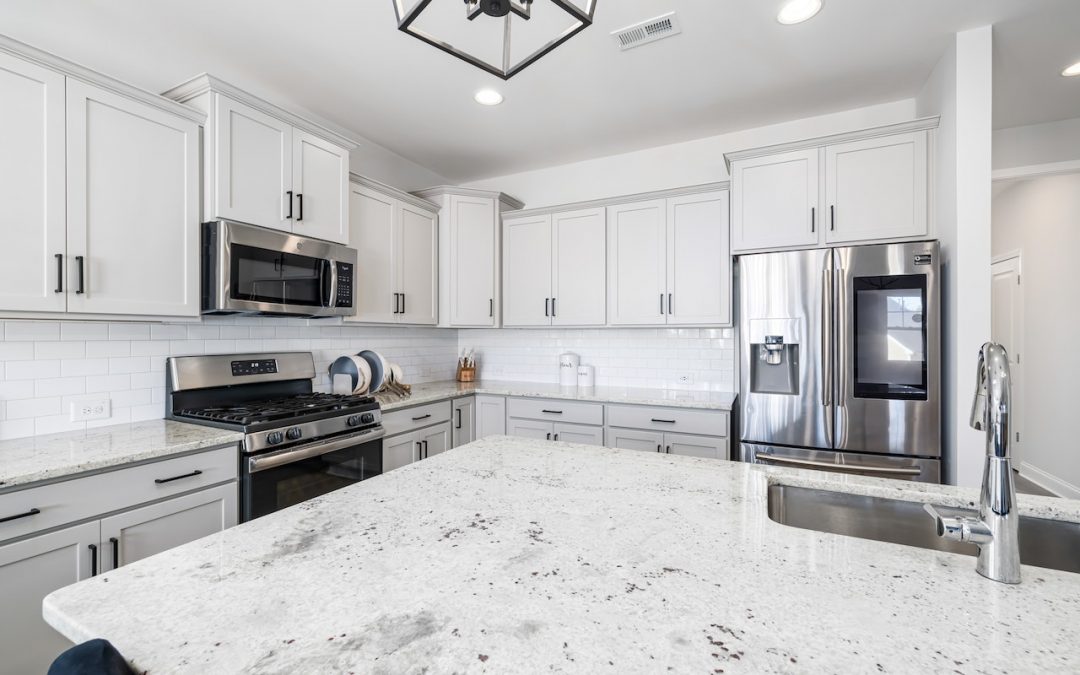Granite Vs Marble Vs Quartz Vs Quartzite
Aside from the floor, your kitchen countertop is likely the most significant surface in your house. It’s where meals for the family are prepared, along with late-night munchies and school assignments for the kids. Additionally, since guests appear to congregate in the kitchen, it serves as a hub for entertaining. Choosing the ideal granite, quartz, or quartzite countertop is crucial because you may have to live with it for many years to come.
But if you’ve ever been through a home renovation showroom, a decorating magazine spread or looked up countertops online, and you know that the decision is more difficult than ever. This is due to the wide variety of countertop materials available, each with a unique appearance and style and a unique set of advantages and disadvantages.
What Is Quartz?
Oxygen and silicon atoms make up the igneous rock known as quartz. The quartz is crushed and combined with resin to make a solid surface. Quartz from mines is used in quartz countertops.
Quartz artifacts from 800-600 BC can be used in the process, which dates back over 2000 years. One of the first decorative things to contain quartz was jewelry.
POTENTIAL DISADVANTAGES:
Unlike granite countertops, quartz countertops are not heat-resistant and can be stained or damaged by intense heat. You still may need trivets and hot pads when baking or cooking.
Quartz countertops look artificial and “finished,” in contrast to the natural beauty of granite and marble slabs. Some people find this appealing, but before you buy, make sure you’re at ease with it.
What Is Granite?
Additionally, there is the hard and igneous option of granite. Quartz is used to make granite, and granite countertops that double as quartz surfaces are an option. However granite isn’t necessarily quartz, though.

Granite is created when magma below the surface of the Earth crystallizes, freezes into a crystal form, and absorbs anything it can. This explains why granite doesn’t all have the same hue or pattern like quartz can. Each slab is completely unique.
POTENTIAL DISADVANTAGES:
Not Impervious: Despite being sturdy, granite countertops are nevertheless susceptible to cracks and chips. Additionally, granite absorbs fluids, making it highly stainable if not sealed.
Maintenance Required: To keep your granite countertops safe from stains and other types of harm, you will want to regularly reseal them.
Weight: Granite slabs are quite heavy, just like other stone surfaces. Your cabinets might need to be changed or strengthened before being installed if they were not designed to withstand their weight.
What Is Marble?
A metamorphic rock, marble has been altered by heat and pressure throughout time. A rock called marble was once limestone. Both severe pressure and heat were applied to the limestone.
People also adore marble and it is known as the butterfly of rocks. It has benefits and drawbacks, much like the other two stones.
POTENTIAL DISADVANTAGES:
Price: Marble is one of the most expensive countertop materials you can purchase per square foot. It costs much more than butcher block and is much more pricey than quartz or granite. Before you fall in love with marble, acquire a quote. It might not be within your remodel’s price range.
Protection: Marble countertops are not scratch-resistant, in contrast to granite and quartz. To protect your counters from unintentional damage, utilize cutting boards and exercise extra caution.
Marble countertops are more prone to stains than other types of stone surfaces. This could be bad news for your kitchen because it means you have to be cautious around messes and cutting boards.
What Is Quartzite?
The metamorphic rock known as quartzite is almost entirely composed of the mineral quartz. It is kind of like a cross between quartz and granite, hence its name. Quartzite first appears in the geologic record as sand grains, possibly on a beach, dune in a desert, or riverbed. Sandstone is created when the sand grains bind and compress over time. Sandstone becomes hotter and more compacted as it is buried deeper and deeper beneath layers of rocks.
Sand grains lose their original shape and fuse to their neighbors when subjected to enough heat and pressure to create a solid, resilient rock. Similar to how individual snowflakes combine to become solid glacier ice, this process (info here).

POTENTIAL DISADVANTAGES:
Easily Scratched: Quartzite is robust and long-lasting, although sharp items like blades can still hurt it. For instance, chopping vegetables on a quartzite kitchen countertop would produce scratches and dings.
Higher Price: Quartzite is still a pricey countertop material, even though it is less expensive than marble, just like any real stone. Fabricating it to the size of your kitchen or bathroom countertop can be a pricey operation that requires specialized laborers because it needs diamond cutters to be cut.
Porous: The permeable nature of quartzite necessitates sealing. Without sealing, spills may leak through and cause stubborn stains and bacterial development, especially if they are not cleaned up right away. To maintain your quartzite countertops bright and stain-free, seal them at least once a year. You might need to seal the quartzite more than once, depending on the kind you bought.
WHAT TO CONSIDER BEFORE CHOOSING WHICH MATERIAL YOU WANT TO USE?
Choosing between granite vs. marble vs. quartz or quartzite is easier when you know your priorities. Here are three questions to answer:
- Which of the following is more crucial while using your countertops: etching, scratch resistance, or stain resistance? Quartz surfaces ward off all three. Better at repelling etching is quartzite. Though quartzite is also less scratch- and stain-resistant than granite.
- How much time are you willing to spend cleaning and maintaining your countertops? Every stone countertop requires periodic sealing to keep it water- and stain-resistant. Quartz. Never needs to be sealed.
- What is the estimated cost of remodeling your kitchen? Marble and quartzite is typically the most expensive material, followed by granite. By employing your preferred countertop material in one location, such as a center island, and selecting a complimentary, less expensive surface for your side counters, you can cut the cost of your preferred countertop material.
You will be getting one of the best options you can employ in your home, no matter which of the four materials you select for your new countertops. You can determine which material is the most outstanding choice for your home by weighing the various factors discussed and explained above.

